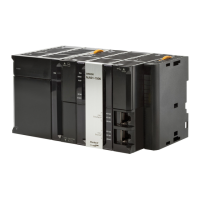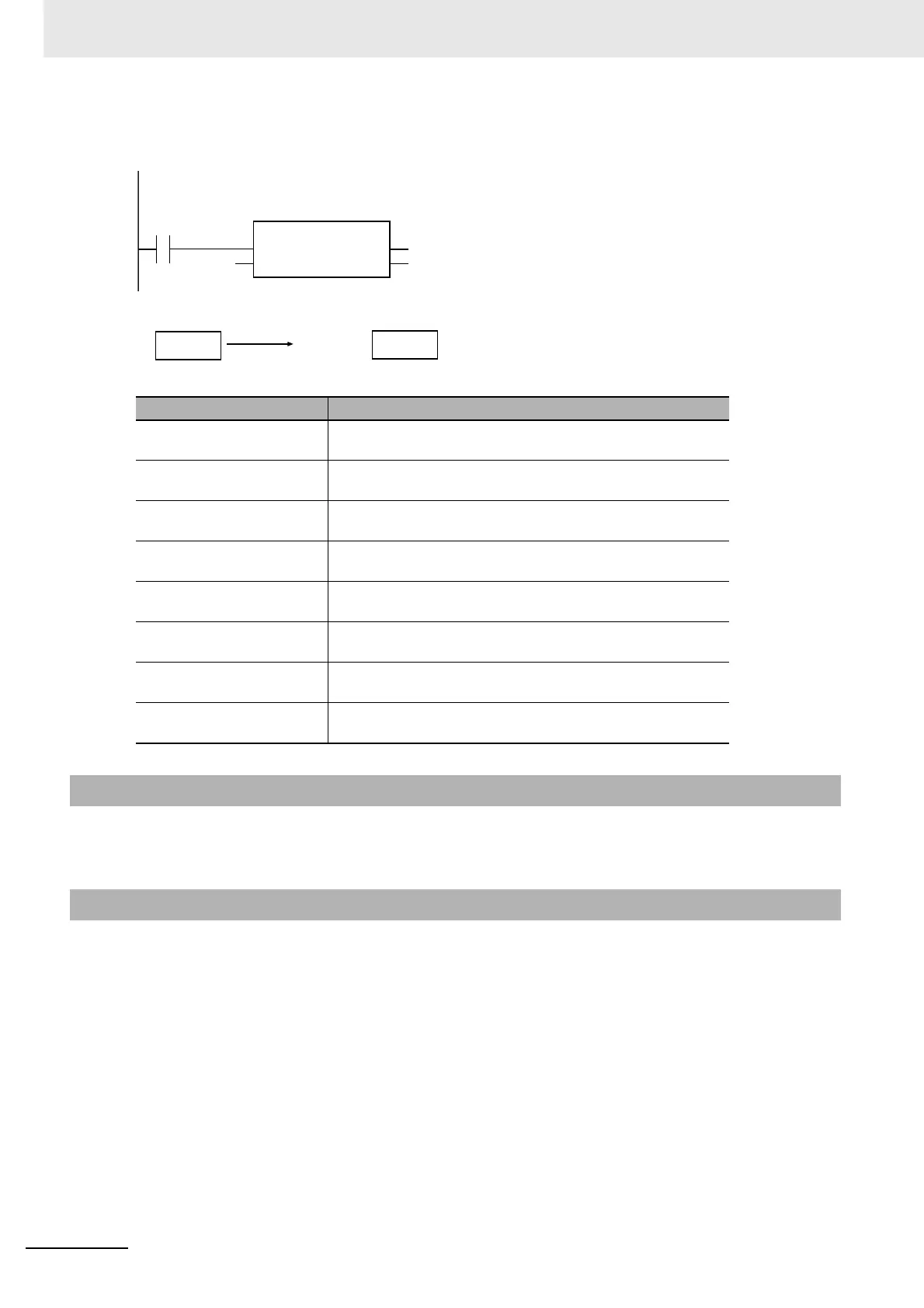2 Instruction Descriptions
2-254
NJ-series Instructions Reference Manual (W502)
The following example for the INT_TO_STRING instruction is for when In is INT#1234.
The valid range of Out depends on the data type of In as shown below:
To convert a text string number to an integer, use a STRING_TO_** (Text String-to-Integer Conversion
Group) instruction (page 2-270).
• Always use the correct instruction name for the data type of In.
• An error occurs in the following case. ENO will be FALSE, and Out will not change.
• The number of bytes in the conversion result exceeds the size of the output parameter that is con-
nected to Out.
Data type of In Valid range of Out (maximum number of bytes)
USINT 4 bytes (three single-byte alphanumeric characters plus the
final NULL character)
UINT 6 bytes (five single-byte alphanumeric characters plus the final
NULL character)
UDINT 11 bytes (10 single-byte alphanumeric characters plus the final
NULL character)
ULINT 21 bytes (20 single-byte alphanumeric characters plus the final
NULL character)
SINT 5 bytes (four single-byte alphanumeric characters plus the final
NULL character)
INT 7 bytes (six single-byte alphanumeric characters plus the final
NULL character)
DINT 12 bytes (11 single-byte alphanumeric characters plus the final
NULL character)
LINT 21 bytes (20 single-byte alphanumeric characters plus the final
NULL character)
Additional Information
Precautions for Correct Use
abc:=INT_TO_STRING(INT#1234);
LD
ST
abc
INT#1234
INT_TO_STRING
EN ENO
In
INT data
STRING data
In
Out=abc
INT#1234
‘1234’

